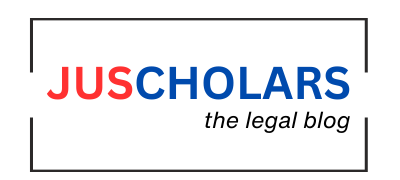Introduction
Artificial Intelligence (AI) is transforming industries, from healthcare to finance, driving unprecedented innovation and efficiency. However, its rapid proliferation has spurred a global wave of regulatory initiatives aimed at ensuring its ethical application. Governments are introducing AI ethics regulations to address risks such as bias, privacy violations, and lack of transparency. For corporations operating across multiple jurisdictions, complying with these diverse and dynamic standards poses significant challenges.
Key AI Regulations Around the World
As AI adoption grows, governments are stepping in to ensure this transformative technology is developed and deployed responsibly. Below is a curated list of some of the most impactful AI regulations shaping compliance today.
- The EU AI Act stands as the world’s first comprehensive legal framework governing artificial intelligence, employing a risk-based approach to ensure the safety, transparency, and accountability of AI systems. Much like the General Data Protection Regulation (GDPR) did for data privacy, the EU AI Act is poised to set a global standard for AI compliance, influencing regulatory practices across jurisdictions.
- The Texas Responsible AI Governance Act (TRAIGA) establishes a progressive regulatory structure to oversee the creation, implementation, and operation of artificial intelligence systems throughout Texas. Set to go into effect on September 1, 2025, this law imposes robust standards on high-risk AI systems, emphasizing transparency, risk management, and the safeguarding of consumer rights. At the same time, it promotes technological advancement by integrating a regulatory sandbox, allowing for controlled experimentation with AI innovations.
- South Korea’s Basic Act on AI Advancement and Trust, passed in November 2024 and set to take effect in late 2025, is a groundbreaking law aimed at regulating AI development responsibly while maintaining public trust. It emphasizes safety, transparency, and fairness, particularly for high-impact and generative AI systems, and applies to both domestic and foreign entities offering AI products and services in the country. By enforcing measures like risk assessments, data governance, and human oversight, the legislation seeks to address potential risks while fostering ethical AI practices through audits, impact assessments, and collaboration between public and private sectors. Ultimately, the Act aims to establish South Korea as a global leader in balancing AI innovation with ethical governance and societal well-being.
How Modulos Aligns with Major Regulations
The Modulos AI Governance Platform elevates compliance standards by integrating sophisticated AI governance features into a user-friendly system, ensuring that adherence to regulations is straightforward, adaptable, and effective. Below is an overview of how Modulos supports your organization in meeting the key demands of global AI regulations.
- Human Oversight & Accountability
Ensuring ethical and responsible AI operation hinges on accountability. Modulos embeds human oversight throughout the AI lifecycle, spanning from initial design to final deployment. By establishing organized workflows for human evaluation, the platform maintains traceable decision-making processes, aiding compliance with laws such as South Korea’s Basic Act and Colorado’s AI regulations.
- AI Compliance by Design
Modulos integrates compliance measures directly into each phase of AI development. By addressing regulatory standards from the beginning—starting with data collection through to model implementation—the platform minimizes future compliance risks and simplifies the audit process, thereby conserving both time and resources.
- Always Up to Date with Emerging Rules
Given the dynamic nature of the regulatory environment, Modulos ensures organizations remain proactive. The platform consistently tracks changes in global AI regulations and autonomously updates its controls to align with the most current standards. Through anticipatory alerts, users are kept informed of significant developments, such as new reporting mandates or alterations in risk management protocols.
Common Threads in AI regulations
- Transparency
Regulatory frameworks emphasize the importance of transparency by requiring AI disclosures and the proper labeling of generative AI outputs. This ensures that users are clearly informed when they are interacting with AI-generated content, promoting trust and accountability.
- Risk Management
Effective risk management is a cornerstone of AI regulation. Laws often mandate the classification of AI systems based on risk levels, particularly focusing on high-risk applications. Organizations are also required to conduct regular audits and impact assessments to identify, mitigate, and monitor potential harms associated with AI technologies.
- Human Oversight
To prevent over-reliance on automated systems, regulations stress the need for human oversight. Human-in-the-loop requirements ensure that critical decisions made by AI are subject to human review and intervention, safeguarding ethical standards and user rights.
- Data Privacy
AI regulations are closely aligned with established data protection laws like the GDPR, CCPA, and LGPD. These requirements focus on securing personal data, ensuring user consent, and maintaining privacy standards across AI applications to protect individuals’ rights in the digital environment.
Navigating Corporate Compliance: Obstacles and Solutions
- Navigating Diverse Regulatory Frameworks
The global landscape of AI ethics regulations is marked by significant variation, complicating compliance for multinational organisations. The European Union’s AI Act, for instance, classifies AI systems by risk level, imposing rigorous obligations on “high-risk” applications like facial recognition. Conversely, China’s AI regulations prioritise state oversight, data security, and content control, requiring real-time monitoring for generative AI systems. In the United States, the absence of a unified federal AI law results in reliance on sector-specific guidelines, such as the NIST AI Risk Management Framework, alongside state-level measures like California’s AI transparency laws. This regulatory patchwork creates a complex compliance environment.
Example: A U.S.-based technology leader deploying AI chatbots globally must adhere to the EU AI Act’s transparency mandates for user interactions while meeting China’s requirements for local data storage and content filtering. Non-compliance could lead to hefty fines or exclusion from key markets.
Strategy: Businesses should establish a centralised AI governance team with expertise in cross-jurisdictional regulations to monitor and interpret regional requirements. Investing in modular AI systems—designed to adapt features based on geographic needs—can enhance compliance efficiency and flexibility.
- Ensuring Transparency and Explainability
Many AI ethics regulations, such as the EU AI Act and Canada’s proposed Artificial Intelligence and Data Act (AIDA), mandate transparency and explainability, particularly in critical sectors like healthcare and criminal justice. Yet, sophisticated models like deep neural networks often operate as “black boxes,” obscuring their decision-making processes. This lack of clarity can incur regulatory penalties and undermine public confidence.
Example: A European bank leveraging AI for loan approvals faced regulatory scrutiny under the EU AI Act when it could not explain denials to customers. The bank’s opaque proprietary model required a costly redesign to meet compliance standards.
Strategy: Organisations should integrate explainable AI (XAI) methodologies, such as SHAP (SHapley Additive exPlanations) or LIME (Local Interpretable Model-agnostic Explanations), to make model outputs comprehensible. Maintaining detailed records of training data, model architecture, and decision rationales is critical for audit readiness. Proactive stakeholder engagement, including clear customer explanations, further supports transparency obligations.
- Addressing Data Privacy and Bias Mitigation
AI systems rely on vast datasets, raising pressing concerns about privacy and fairness. Regulations like the EU’s General Data Protection Regulation (GDPR) and California’s Consumer Privacy Act (CCPA) enforce strict data-handling protocols, including user consent and data minimisation. Additionally, ethical AI frameworks—such as UNESCO’s guidelines and Singapore’s Model AI Governance Framework—require active efforts to mitigate bias and prevent discrimination. Detecting and addressing biases in datasets or algorithms presents both technical and ethical difficulties.
Example: A U.S. healthcare AI startup faced penalties after its diagnostic tool, trained on data underrepresented minority groups, produced biased results that breached proposed federal fairness standards. The firm incurred substantial costs to retrain its models and regain credibility.
Strategy: Adopt comprehensive data governance practices, including anonymisation and encryption, to protect user privacy. Perform regular bias audits using metrics like demographic parity or equal opportunity to identify disparities. Source diverse, representative datasets and consult domain experts to ensure model fairness. Partnering with external auditors can bolster compliance and trust.
- Building a Culture of Ethical AI
Beyond technical adherence, regulators increasingly expect organisations to integrate ethical principles into AI development and deployment. This requires a cultural transformation, ensuring employees across all levels embrace AI ethics. Resistance to change, limited awareness, or fragmented decision-making can hinder the adoption of ethical practices.
Example: A global insurance firm in Australia struggled to deploy AI for underwriting due to employee scepticism about ethical guidelines. Leadership-driven training and transparent communication eventually aligned teams with the country’s Principles for Responsible AI, boosting both compliance and morale.
Strategy: Implement tailored AI ethics training programmes for diverse roles, from developers to executives. Designate AI ethics officers to champion policy enforcement and advocacy within the organisation. Encourage open dialogue through ethics committees or town hall sessions to address concerns and align with regulatory and ethical expectations.
Conclusion
Global AI ethics regulations pose a multifaceted challenge for corporations, requiring them to navigate divergent frameworks, ensure transparency, mitigate bias, manage costs, and cultivate ethical cultures. Though compliance entails considerable effort and investment, proactive strategies—such as adopting explainable AI, enforcing robust data governance, and prioritising training—can reduce risks and unlock competitive advantages. By meeting regulatory demands, businesses can enhance trust, avoid penalties, and position themselves as pioneers in ethical AI innovation. Ultimately, compliance should be seen not as an obstacle but as a driver of responsible and sustainable growth.
Author: Akshyatha.R is a BBA.LL.B(Hons) Student at Saveetha School of Law, Saveetha Institute of Medical and Technical Sciences







